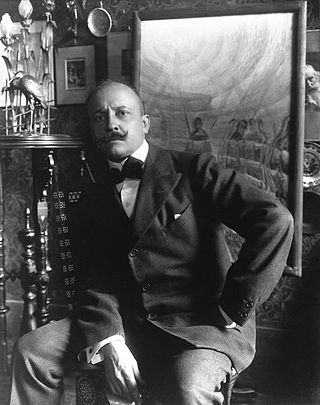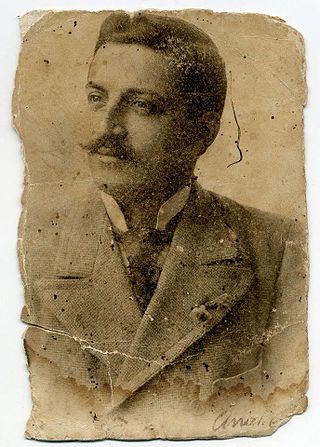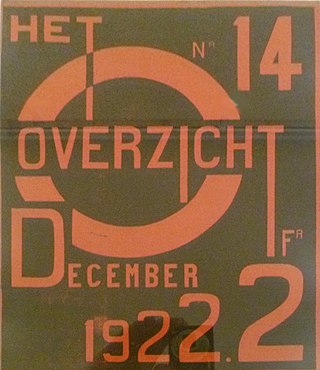Related Research Articles

Filippo Tommaso Emilio Marinetti was an Italian poet, editor, art theorist, and founder of the Futurist movement. He was associated with the utopian and Symbolist artistic and literary community Abbaye de Créteil between 1907 and 1908. Marinetti is best known as the author of the first Futurist Manifesto, which was written and published in 1909, and as a co-author of the Fascist Manifesto, in 1919.

Naples is the regional capital of Campania and the third-largest city of Italy, after Rome and Milan, with a population of 909,048 within the city's administrative limits as of 2022. Its province-level municipality is the third-most populous metropolitan city in Italy with a population of 3,115,320 residents, and its metropolitan area stretches beyond the boundaries of the city wall for approximately 30 kilometres.

The Manifesto of Futurism is a manifesto written by the Italian poet Filippo Tommaso Marinetti and published in 1909. Marinetti expresses an artistic philosophy called Futurism that was a rejection of the past and a celebration of speed, machinery, violence, youth and industry. It also advocated for the modernization and cultural rejuvenation of Italy.
Eduardo di Capua was a Neapolitan composer, singer and songwriter.
Antonio Russolo (1877–1943) was an Italian Futurist composer and the brother of the more famous Futurist painter, composer and theorist Luigi Russolo. He is noted for composing pieces made with the intonarumori and, together with his brother, introduced The Art of Noises.

Salvatore Di Giacomo was an Italian poet, songwriter, playwright and fascist, one of the signatories to the Manifesto of the Fascist Intellectuals.
Naples has played an important and vibrant role over the centuries not just in the music of Italy, but in the general history of western European musical traditions. This influence extends from the early music conservatories in the 16th century through the music of Alessandro Scarlatti during the Baroque period and the comic operas of Pergolesi, Piccinni and, eventually, Rossini and Mozart. The vitality of Neapolitan popular music from the late 19th century has made such songs as'O Sole mio and Funiculì Funiculà a permanent part of our musical consciousness.
Canzone napoletana, sometimes referred to as Neapolitan song, is a generic term for a traditional form of music sung in the Neapolitan language, ordinarily for the male voice singing solo, although well represented by female soloists as well, and expressed in familiar genres such as the love song and serenade. Many of the songs are about the nostalgic longing for Naples as it once was. The genre consists of a large body of composed popular music—such songs as "'O sole mio"; "Torna a Surriento"; "Funiculì, Funiculà"; "Santa Lucia" and others.
Franco Casavola was a Futurist composer and theorist. He is noted as one of the authors of the Le Sintesi Visive della Musica, a manifesto that proposed the intrinsic visual counterparts of music.
This is a list of music conservatories in Naples, Italy.

Aniello Califano was an Italian poet and writer. He was the author of numerous Neapolitan songs, the music to which was composed by various Neapolitan composers. A number of his songs, especially "'O surdato 'nnammurato", remain popular today.
Vincenzo Valente was an Italian composer and writer. He was known for his Neapolitan songs and for his operettas.

Agostino Capozzi, known professionally as Mario Trevi, is an Italian singer and actor.

Het Overzicht was a Dutch language literary magazine published in Antwerp, Belgium, between 1921 and 1925. Until its cessation in 1925 it was the major avant-garde magazine in the country and published a total of 24 issues.
Nuori Voima is a Finnish literary and cultural magazine which has been published since 1908. It is headquartered in Helsinki, Finland. Both the magazine and its parent organization, Nuoren Voiman Liitto, are among the well-respected institutions in Finland.

Mala vita is an opera in three acts composed by Umberto Giordano to a libretto by Nicola Daspuro adapted from Salvatore Di Giacomo and Goffredo Cognetti's verismo play of the same name. Giordano's first full-length opera, Mala vita premiered on 21 February 1892 at the Teatro Argentina. It was subsequently performed in Naples, Vienna, Berlin and Milan, and various Italian cities over the next two years. In 1897 a considerably re-worked and revised version under the title Il voto premiered in Milan. Within a few years, both versions had disappeared from the repertoire. Amongst its rare modern revivals was the 2002 performance at the Teatro Umberto Giordano in Foggia which was recorded live and released on the Bongiovanni label.
Il Travaso delle idee, mostly known as Il Travaso, was a satirical magazine which was in circulation between 1900 and 1966 with an interruption in the period 1944–1946. Its subtitle was Organo ufficiale delle persone intelligenti. The magazine was headquartered in Rome, Italy.
La Gaceta Literaria was a bimonthly avant-garde literary, arts and science magazine which appeared in Madrid, Spain, between 1927 and 1932. It is known for its leading contributors and editorial board members.
Prometeo was a monthly avant-garde magazine which existed between 1908 and 1912 in Madrid, Spain. The magazine was established by the avant-garde writer Javier Gómez de la Serna. Its subtitle was revista social y literaria.
Zwrotnica was an avant-garde magazine which was one of the significant publications in Poland. It appeared in Kraków in two periods: first between 1922 and 1923, and then between 1926 and 1927. Despite its short run, it is the first Polish avant-garde magazine that had an international audience.
References
- 1 2 3 "La tavola rotonda, giornale, letterario, illustrato, musicale della domenica, Piedigrotta 1898". bnnonline.it (in Italian). 1 June 2018. Retrieved 1 October 2023.
- 1 2 3 4 5 Giuseppe Sergi (2014). "La canzone napoletana classica ne «La Tavola rotonda» (1891-1921)". Fonti Musicali Italiane (in Italian) (19): 111–150.
- 1 2 3 4 Antonio Lucio Giannone (8 July 2017). "Da "La Tavola rotonda" alla "Rivista d'Italia": Saponaro redattore (attraverso le lettere)". iuncturae.eu (in Italian). Retrieved 1 October 2023.
- 1 2 Marialuisa Stazio (2014). "Neapolitan songs: A communicative siren from the water of the Gulf to the water of time". European Journal of Cultural Studies . 18 (3): 350, 352. doi:10.1177/1367549414526731. S2CID 143370472.
- ↑ Günter Berghaus (2014). "Futurism and Modernist Magazines". In Günter Berghaus (ed.). International Yearbook of Futurism Studies. Vol. 4. Berlin; Boston: De Gruyter. p. 55. doi:10.1515/futur-2014-0010. ISBN 9783110334104.